#non fiction books
Text
Feminist Non-Fiction Recs

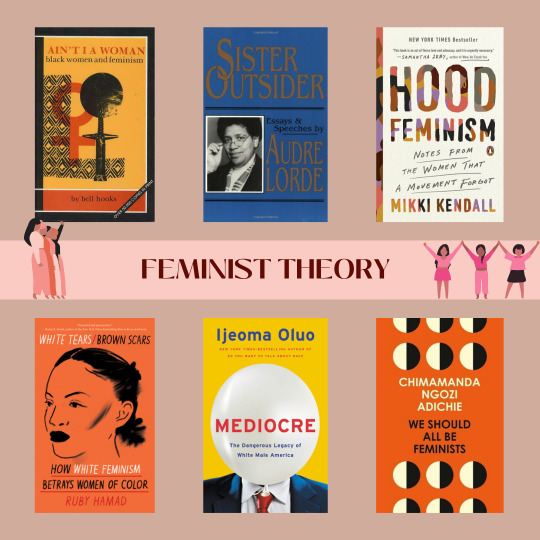


Because feminism isn't only about your own voice and your own rights, but about the liberation of all women, it's important to uplift the voices of women who are rarely heard. To honour this international day of Women's Rights, here are some recommendations for non-fiction feminist theory books centered on women of colour.
Please note that this is a non-exhaustive list, and that some very important works might not figure on it. Take it as inspiration, not as a binding list of works to have read, and remember that this is only the surface of women of colour's writings on feminism.
all of bell hooks' books, but I would recommend "Ain't I a Woman: Black Women and Feminism" to start with intersectional feminism
There Is No Hierarchy of Oppression; by Audre Lorde
Sister Outsider; by Audre Lorde (all of Audre Lorde, actually)
Hood Feminism; by Mikki Kendall
White Tears, Brown Scars; by Ruby Hamad
Mediocre; Ijeoma Oluo
We Should All Be Feminists; by Chimamanda Ngozi Adichie
This Bridge Called My Back; an anthology edited by Cherríe Moraga and Gloria E. Anzaldúa
Bad Feminist; by Roxane Gay
I Am Malala; by Malala Yousafzai
Black Feminist Thought: Knowledge, Consciousness, and the Politics of Empowerment; by Patricia Hill Collins
Arab & Arab American Feminisms: Gender, Violence, & Belonging; an anthology edited by Rabab Abduhaldi, Evelyn Alsultany and Nadine Naber
Making Space for Indigenous Feminism; an anthology edited by Joyce Green
Beyond Veiled Clichés: The Real Lives of Arab Women; by Amal Awad
The Trouble with White Women: A Counterhistory of Feminism; by Kyla Schuller
A Decolonial Feminism; Françoise Vergès
Eloquent Rage: A Black Feminist Discovers Her Superpower; by Brittney Cooper
Women, Race, & Class; by Angela Y. Davis
These books really only scrape the surface of an intersectional approach of feminism focused on race, and if you want to discover more works, I would recommend looking at intersectional feminism and decolonial feminism. Also, if you're not a native English speaker or if you speak fluently multiple languages, I recommend looking for feminist books originally written in other languages that may not have been translated to English, as they offer a perspective that is not so American-centered, which I feel is the case in too much of today's feminism.
#international women's day#feminist books#feminist theory#intersectional feminism#decolonial feminism#women of color#non fiction books#book recs#book recommendations
65 notes
·
View notes
Note
I've recently moved from the city to the country with my family and want to write a memoirs based on my experiences with nature. Do you have any tips on nature writing? I don't want to write fiction, but i'm not sure how to make non-fiction interesting.
We've actually got a great series of resources in the Reading Room on all types of non-fiction writing, created for us by a commissioning editor from Penguin Random House! Here's the one specifically on nature writing:
The entire series is well worth reading, and she also created a completely free non-fiction book proposal course for us too, which will teach you what a book proposal needs to include for you to best pitch to publishers.
#writing non fiction#nature writing#non fiction books#writers#creative writing#writing#writing community#writers of tumblr#creative writers#writing inspiration#writeblr#writerblr#writing tips#writblr#writer stuff#writers on tumblr#writers corner#helping writers#writing courses#help for writers#tips for writers#how to write#learn to write#writer#writing advice#writing resources#writers and poets#resources for writers#writing stuff#on writing
19 notes
·
View notes
Text
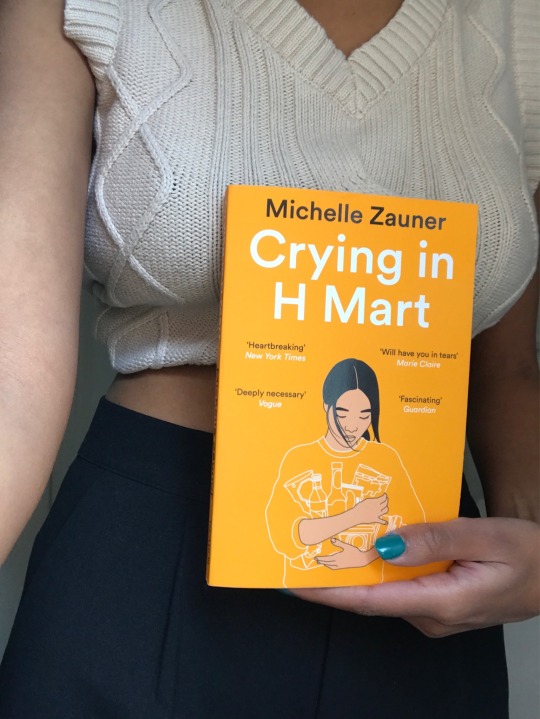

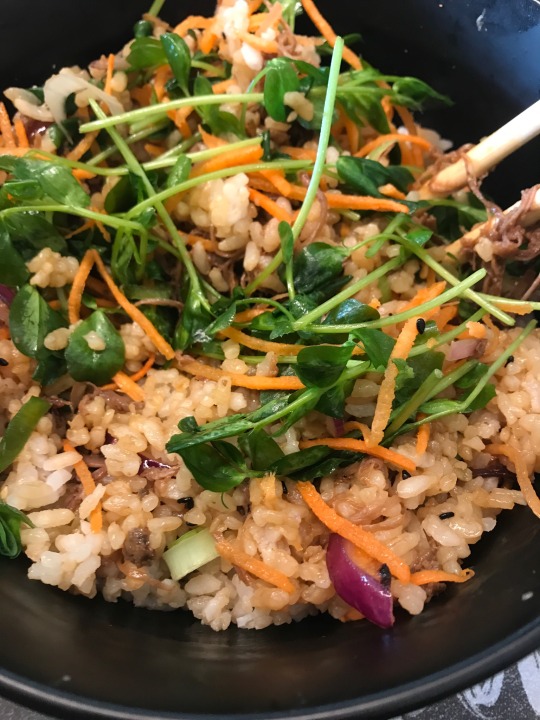

non-fiction november read & treat yo self moments. crying in h mart was an emotional read and beautifully written. it’s main themes are mother-daughter relationships & connecting to culture through food (so of course I was craving korean food throughout) it also made me reflect on my own relationship with my mum. overall an heartfelt memoir —5 stars
#reading list#currently reading#non fiction books#memoir#book stack#book blog#booklover#books#book review#bookshelf#bookblr#reading#studyblr#bujo#bullet journal#journal#study aesthetics#book aesthetic#light aesthetic#korean food#glossyhobi
161 notes
·
View notes
Photo
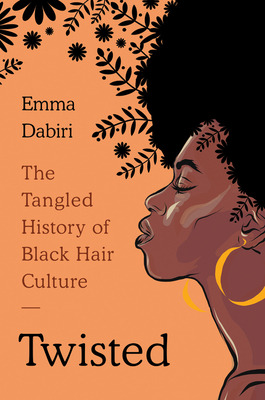
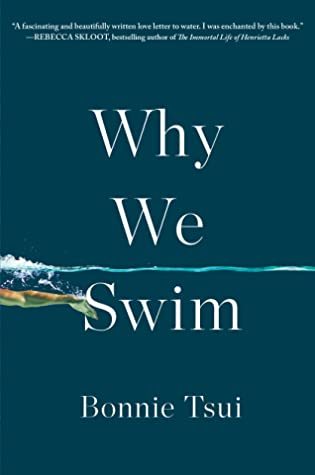


Diving in Deep: In-Depth Nonfiction Picks
Twisted: The Tangled History of Black Hair Culture by Emma Dabiri
From Guardian contributor BBC race correspondent Emma Dabiri comes an essay collection exploring the ways in which black hair has been appropriated and stigmatized throughout history, with ruminations on body politics, race, pop culture, and Dabiri’s own journey to loving her hair.
Emma Dabiri can tell you the first time she chemically straightened her hair. She can describe the smell, the atmosphere of the salon, and her mix of emotions when she saw her normally kinky tresses fall down her shoulders. For as long as Emma can remember, her hair has been a source of insecurity, shame, and—from strangers and family alike—discrimination. And she is not alone.
Despite increasingly liberal world views, black hair continues to be erased, appropriated, and stigmatized to the point of taboo. Through her personal and historical journey, Dabiri gleans insights into the way racism is coded in society’s perception of black hair—and how it is often used as an avenue for discrimination. Dabiri takes us from pre-colonial Africa, through the Harlem Renaissance, and into today's Natural Hair Movement, exploring everything from women's solidarity and friendship, to the criminalization of dreadlocks, to the dubious provenance of Kim Kardashian's braids.
Through the lens of hair texture, Dabiri leads us on a historical and cultural investigation of the global history of racism—and her own personal journey of self-love and finally, acceptance.
Why We Swim by Bonnie Tsui
An immersive, unforgettable, and eye-opening perspective on swimming—and on human behavior itself.
We swim in freezing Arctic waters and piranha-infested rivers to test our limits. We swim for pleasure, for exercise, for healing. But humans, unlike other animals that are drawn to water, are not natural-born swimmers. We must be taught. Our evolutionary ancestors learned for survival; now, in the twenty-first century, swimming is one of the most popular activities in the world.
Why We Swim is propelled by stories of Olympic champions, a Baghdad swim club that meets in Saddam Hussein’s palace pool, modern-day Japanese samurai swimmers, and even an Icelandic fisherman who improbably survives a wintry six-hour swim after a shipwreck. New York Times contributor Bonnie Tsui, a swimmer herself, dives into the deep, from the San Francisco Bay to the South China Sea, investigating what about water—despite its dangers—seduces us and why we come back to it again and again.
Gathering Moss: A Natural and Cultural History of Mosses by Robin Wall Kimmerer
Living at the limits of our ordinary perception, mosses are a common but largely unnoticed element of the natural world. Gathering Moss is a beautifully written mix of science and personal reflection that invites readers to explore and learn from the elegantly simple lives of mosses. Robin Wall Kimmerer's book is not an identification guide, nor is it a scientific treatise. Rather, it is a series of linked personal essays that will lead general readers and scientists alike to an understanding of how mosses live and how their lives are intertwined with the lives of countless other beings, from salmon and hummingbirds to redwoods and rednecks. Kimmerer clearly and artfully explains the biology of mosses, while at the same time reflecting on what these fascinating organisms have to teach us.
Drawing on her diverse experiences as a scientist, mother, teacher, and writer of Native American heritage, Kimmerer explains the stories of mosses in scientific terms as well as in the framework of indigenous ways of knowing. In her book, the natural history and cultural relationships of mosses become a powerful metaphor for ways of living in the world.
Entangled Life: How Fungi Make Our Worlds, Change Our Minds & Shape Our Futures by Merlin Sheldrake
There is a lifeform so strange and wondrous that it forces us to rethink how life works…
Neither plant nor animal, it is found throughout the earth, the air and our bodies. It can be microscopic, yet also accounts for the largest organisms ever recorded, living for millennia and weighing tens of thousands of tonnes. Its ability to digest rock enabled the first life on land, it can survive unprotected in space, and thrives amidst nuclear radiation.
In this captivating adventure, Merlin Sheldrake explores the spectacular and neglected world of fungi: endlessly surprising organisms that sustain nearly all living systems. They can solve problems without a brain, stretching traditional definitions of ‘intelligence’, and can manipulate animal behaviour with devastating precision. In giving us bread, alcohol and life-saving medicines, fungi have shaped human history, and their psychedelic properties, which have influenced societies since antiquity, have recently been shown to alleviate a number of mental illnesses. The ability of fungi to digest plastic, explosives, pesticides and crude oil is being harnessed in break-through technologies, and the discovery that they connect plants in underground networks, the ‘Wood Wide Web’, is transforming the way we understand ecosystems. Yet they live their lives largely out of sight, and over ninety percent of their species remain undocumented.
#Nonfiction#non-fiction#science#nature#Environment#social change#to read#tbr#highly recommend#Highly Rated#to be read#reading recommendations#Book Recommendations#non fiction books#booklr#book tumblr#library books
204 notes
·
View notes
Text

James Ramsay (British, 1753‐1828) • Barn Owl (Tyto alba) • History of British Birds • 1797–1804.
#illustration#woodblock print#book illustration#naturalist illustration#orthinological illustration#owls#sassafras & moonshine blog#art#british artist#18th century illustration#j#james ramsay#history of birds#non fiction books
11 notes
·
View notes
Text
looking for mutuals
Hey guys, I am a 17 (turning 18 In November) girl blogger who is looking for mutuals on here. This blog would most be me reviewing and looking through books that I have read and want to read. I would love if you would send recommendations, i tend to read romance, thriller/horror and classical.
looking forward to talk to you all.
xoxo
Lucy. D
#book review#books#girlblogger#books & libraries#books and reading#bookstagram#booktube#booktok#romance books#horror books#thriller books#classical books#fiction books#young adult#young adult books#non fiction books#looking for mutuals#new to tumblr
4 notes
·
View notes
Text



My Peseach book haul 2024 💜
#bookblr#non fiction#non fiction books#classic literature#ernst hemingway#sarah vaughan#chimamanda ngozi adichie#donna tartt#khalil gibran#simon sebag-montefiore#ernst jünger#bret easton ellis#rick bragg#espionage#espionage history#cold war#philosophy#philosophy books#Aristotle#friedrich nietzsche#Jerusalem#Palestine#the romanovs#the goldfinch#anatomy of a scandal#reputation#storm of steel#a farewell to arms#americanah#where i come from
3 notes
·
View notes
Text
Books are mere objects;
Inanimate, ink-stained leaves —
We imbue magic.
Title: Portable Magic: A History of Books and their Readers
Author: Emma Smith
Published: 2022
Read: March 2023
Rating: 3/5
#haiku#original haiku#Portable Magic#Emma Smith#non fiction#non fiction books#books about books#books#reading#haikulibrary
6 notes
·
View notes
Text

Have you read I'm Glad My Mom Died by Jennette McCurdy? I haven't read it yet but I own a copy and I plan to read it soon.
#books#booklr#bookblogger#book photography#book photo#nonfiction#non fiction books#jennette mccurdy#memoirs#i'm glad my mom died
6 notes
·
View notes
Video
youtube
SPRING book recommendations 🌼
#youtube#booktok#booktube#books#book recommendations#spring books#spring book recommendations#reader#book recs#fiction books#non fiction books#spring classics#cottage core books#bookshelves#booktuber#canadian reader#toronto reader
2 notes
·
View notes
Text
#writing non fiction#writers#creative writing#writing#writing community#writers of tumblr#creative writers#writing inspiration#writeblr#writerblr#writing tips#writblr#writers corner#non fiction books#non fiction#let's write#writing advice#helping writers#writing help#help for writers#advice for authors#book proposal#writer#writing resources#writers on tumblr#writers and poets#resources for writers#writing blog#narrative nonfiction#creative nonfiction
13 notes
·
View notes
Text
That autistic moment when the non-ficiton book on your special intrest doesn't go into enough science/engineering detail and it makes you irrationally angry. Like do NOT make your book marketable to the general public, I wanna have to re-read that paragraph 6 or 7 times and have to google 4 diffrent words in order to comprehend it. This book is just like "yeah the Redstone wasn't good enough so they built the Atlas, and then the Saturn :)" I NEED MORE DETAIL THAN THIS TELL ME ABOUT THE HYPERGOLIC FUEL RATIOS PLEEEAAAAAAASSSEEEEE
#Autism#I am begging#non fiction books#I am so angry but also so calm#Also this book (shoot for the moon by James Donovan) makes NO mention of the black women who contributed so much to space flight#the only women that are mentioned are the wives and Valentina like#can I get some non ficiton that is not written by white men#I thought I was safe since it was published in 2019#I was wrong
5 notes
·
View notes
Text
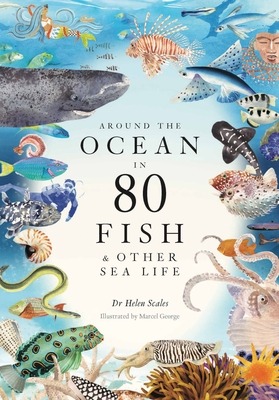

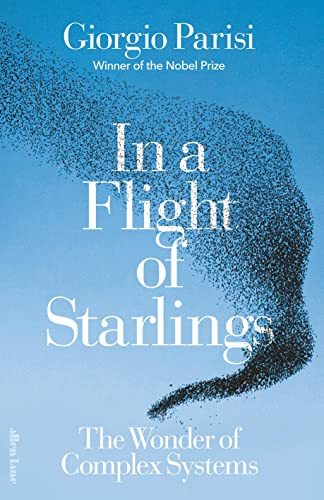

Nonfiction Thursday: New Title Recommendations
Around the Ocean in 80 Fish & Other Sea Life by Helen Scales
This is an inspiring tour of the world's oceans and 80 of its most notable inhabitants. Beautifully illustrated, the book includes fascinating stories of the fish, shellfish, and other sea life that have somehow impacted human life - whether in our medicine, culture or folklore - in often surprising and unexpected ways.
Ice by Amy Brady
Ice is everywhere: in gas stations, in restaurants, in hospitals, in our homes. Americans think nothing of dropping a few ice cubes into tall glasses of tea to ward off the heat of a hot summer day. When children bruise their arms or fall sick with fevers, parents wrap ice in dishtowels and press them tenderly to their skin. Nearly half of all refrigerators owned by Americans feature automatic ice machines. Ice-on-demand has so revolutionized modern life that it's easy to forget that it wasn't always this way...and to overlook what aspects of society might just melt away as the planet warms.
In Ice, journalist and historian Amy Brady shares the strange and storied two-hundred-year-old history of ice in America: from the introduction of mixed-drinks "on the rocks," to P. T. Barnum's first-ever indoor ice rink, to how delicacies like iced custard and iced tea revolutionized our palettes, to the ubiquitous ice machine in every motel across the U.S. But Ice doesn't end in the past. Brady also explores the surprising, present-day uses of ice in sports, medicine, and sustainable energy - including cutting-edge cryotherapy breast-cancer treatments and the promise of a substance called "flammable ice" that may prove to be a cleaner fuel source - underscoring how precious this commodity is, especially in an age of climate change.
In A Flight of Starlings by Giorgio Parisi
In this enchanting little book, celebrated physicist Giorgio Parisi guides us through his unorthodox yet exhilarating work, starting with investigating the principles of physics by observing the sophisticated flight patterns of starlings. Studying the movements of these birds, he has realized, proves an illuminating way into understanding complex systems of all kinds - collections of everything from atoms to planets to other animals like ourselves.
Along the way, he reflects on the lessons he's taken from a life in pursuit of scientific truth: the importance of serendipity to the discovery of new ideas, the surprising kinship between physics and other fields of study and the value of science to a thriving society. In so doing, he removes the practice of science from the confines of the laboratory and into the real world. Complexity is all around us - from climate to finance to biology, it offers a unique way of finding order in chaos.
Muscle by Roy A. Meals, MD
An entertaining illustrated deep dive into muscle, from the discovery of human anatomy to the latest science of strength training. Muscle tissue powers every heartbeat, blink, jog, jump, and goosebump. It is the force behind the most critical bodily functions, including digestion and childbirth, as well as extreme feats of athleticism. We can mold our muscles with exercise and observe the results.
In this lively, lucid book, orthopedic surgeon Roy A. Meals takes us on a wide-ranging journey through anatomy, biology, history, and health to unlock the mysteries of our muscles. He breaks down the three different types of muscle―smooth, skeletal, and cardiac―and explores major advancements in medicine and fitness, including cutting-edge gene-editing research and the science behind popular muscle conditioning strategies. Along the way, he offers insight into the changing aesthetic and cultural conception of muscle, from Michelangelo’s David to present-day bodybuilders, and shares fascinating examples of strange muscular maladies and their treatment. Brimming with fun facts and infectious enthusiasm, Muscle sheds light on the astonishing, essential tissue that moves us through life.
#new books#nonfiction#non fiction books#reading recommendations#reading recs#book recommendations#book recs#library books#tbr#tbr pile#to read#booklr#book tumblr#book blog#library blog#readers advisory
9 notes
·
View notes
Text
The Asura Way - Book Review
Author Anand Neelakantan in his non-fiction book "The Asura Way - The Contrarian Path to Success" turns back the wheel of time to re-interpret age old edicts.
⭐⭐⭐
Rating: 3 out of 5.
Sneha Jaiswal (Twitter | Instagram)
All major religions have their own edicts, their own versions of “the ten commandments”, the numbers and morals might differ a little, but ironically, even Gods seem to have a hard time sticking to the rules at all times. So Anand Neelakantan in his cleverly titled book “The Asura Way” is the author’s guide to getting onto “the…
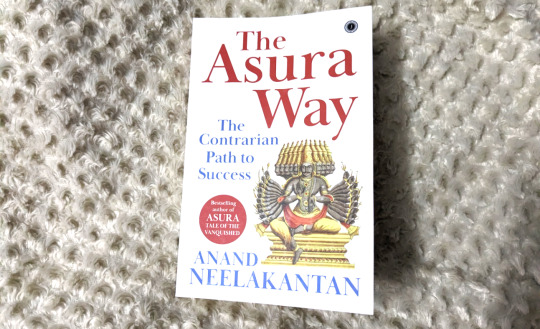
View On WordPress
#Anand Neelakantan#Asuras#Book review#Hindu mythology#Indian mythology#non fiction books#Reviews#The Asura Way Book Review#the asura way review
0 notes
Text
The 10 Best Nonfiction Books of All Time
In our today’s article, we are thrilled to share our latest article featuring the top ten nonfiction books of all time! While we know there are countless amazing reads out there, we’ve carefully curated this list based on several other resources with longer lists and our preferences.
Among numerous other stories about science, politics, and history, works devoted to the study of society, and…

View On WordPress
#best non fiction books#best non fiction books of all time#good non fiction books#non fiction books#non fiction books to read
0 notes
Text
My thoughts on: Stampa e Cultura in Europa by Lodovica Braida
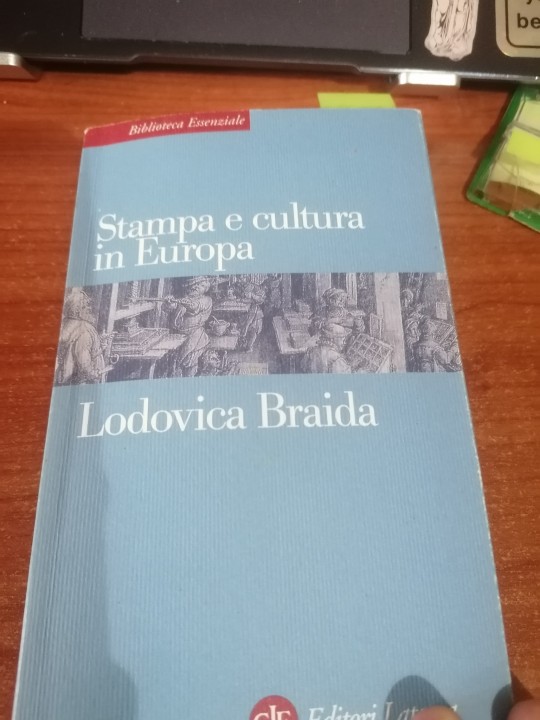
Sorry for the not so artistic photo. One day I'll learn to make beautiful ones, but it's not today.
This morning I finished this book, which is Stampa e Cultura in Europa by Lodovica Braida. It's a non-fiction book about the history of Print and Books and how it all affected culture in Europe.
I had to study/read it for an exam at uni, and I was t sure I was going to like it - it's always a hit and miss with uni books.
Personally, I thought it was very well-written and interesting, and easy to understand - which, considering how my brain is always tired, lately, it's fundamental for me. I also think that, despite the text being very short, it had sla lot of information that helped contextualize the situation at that time, both with the creation of Printing and with the expansion of printed books all over Europe, and the issues it had to face with censorship at the time (in many countries, still now).
Overall, I'd give it a solid 4/5 :)
#booklr#nonfiction#non fiction books#books about books#bookworm#dean talks#lodovica braida#stampa e cultura in Europa
0 notes